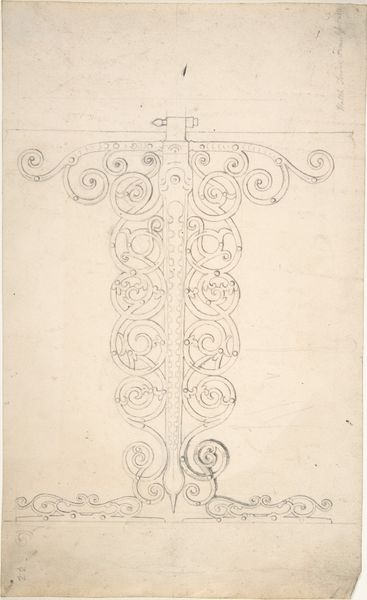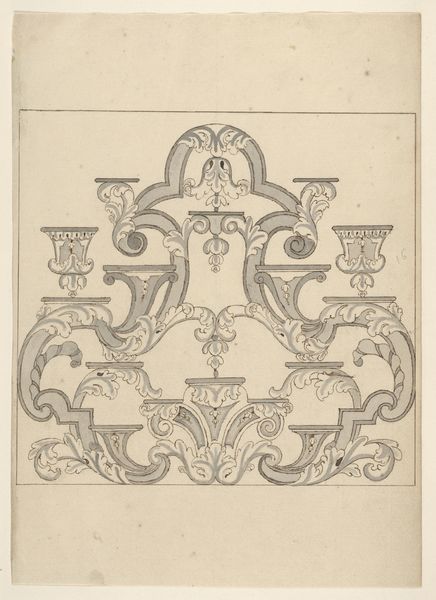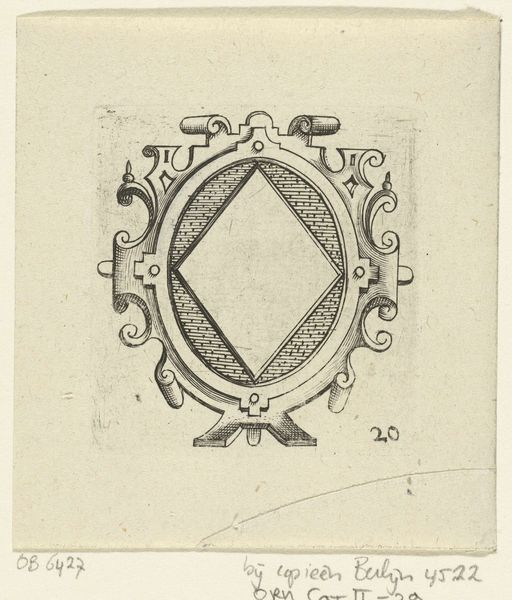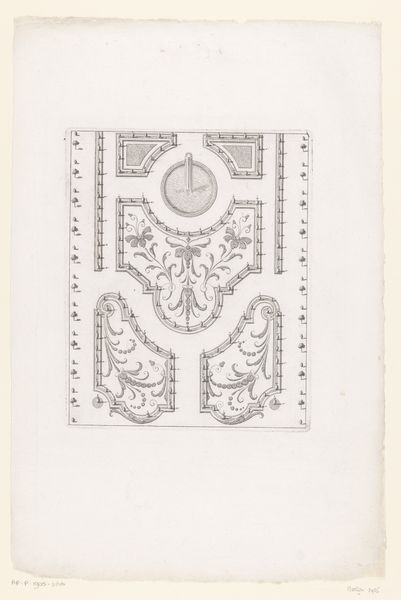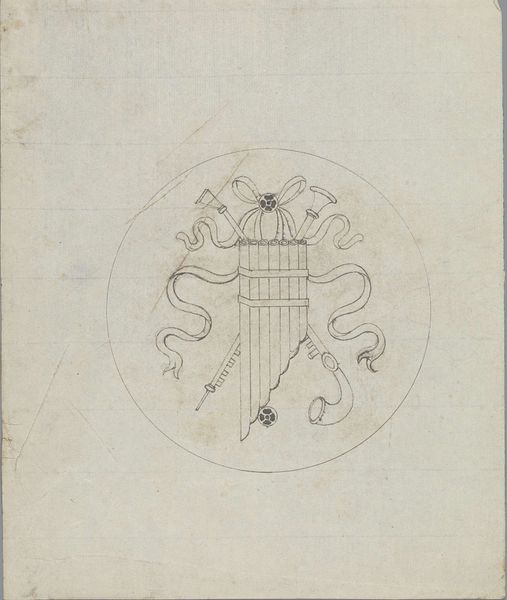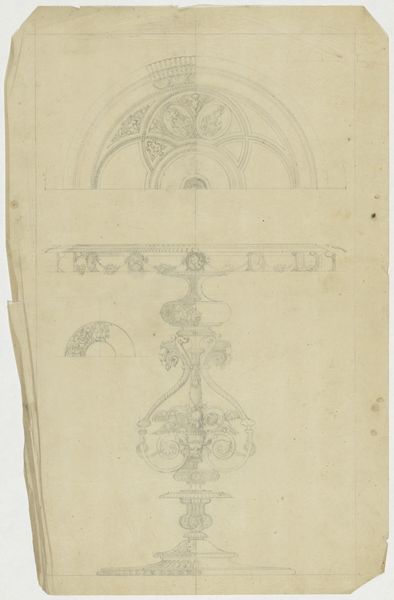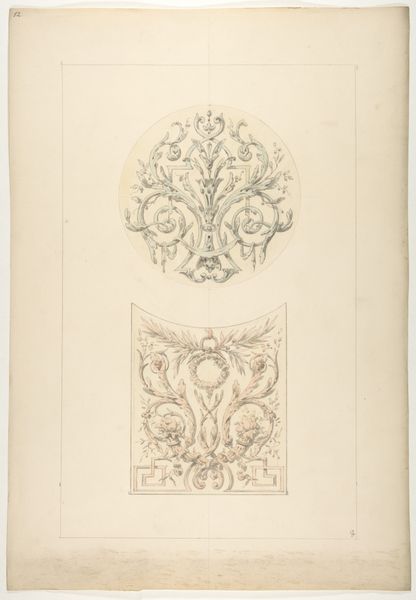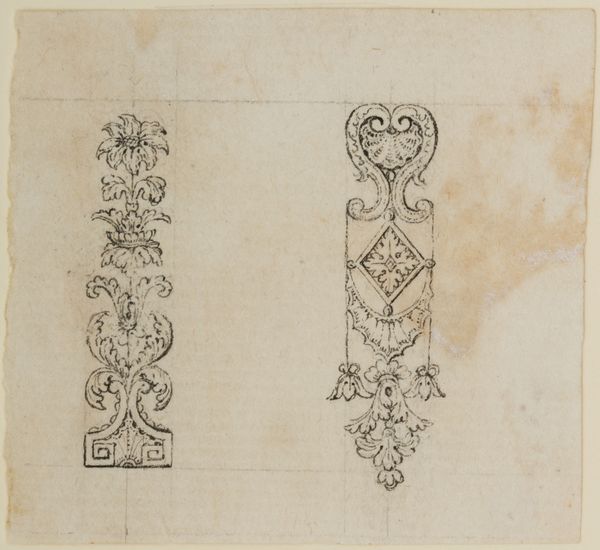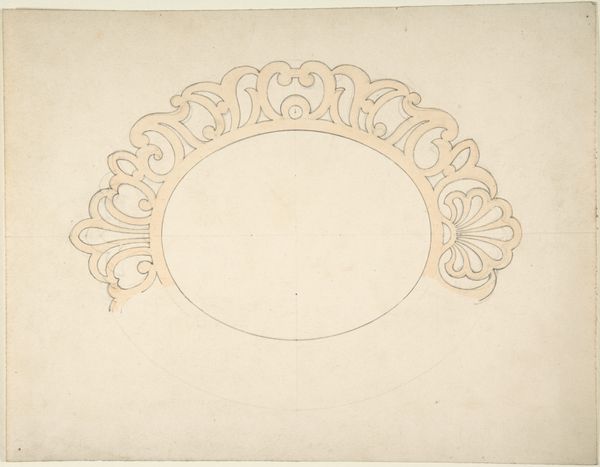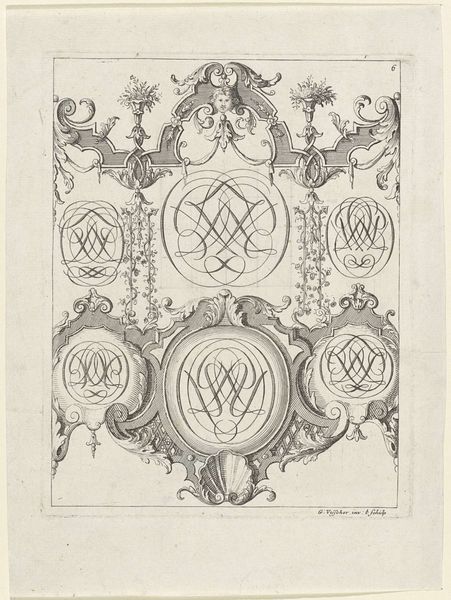
Lauwerkrans met letter C of G. Fragmenten karton voor het glasraam in de westgevel van Joris van Egmond (Bisschop van Utrecht 1535-1559) voor de Sint Bavo Kerk te Haarlem 1541
0:00
0:00
drawing, tempera, paper, pencil
#
drawing
#
tempera
#
paper
#
11_renaissance
#
pencil
#
history-painting
#
northern-renaissance
Dimensions: height 12035 mm, width 580 mm, height 3710 mm, height 76 cm, width 27 cm, depth 27 cm
Copyright: Rijks Museum: Open Domain
Curator: At first glance, I see the precision of architectural planning… but, for all that formality, the softness of hand-drawn execution! Editor: I am seeing a "Lauwerkrans met letter C of G," or Laurel Wreath with the letter C or G, a fragment of a design by Gerrit Boels, dating back to 1541. It was intended for a stained glass window in the Sint Bavo Kerk in Haarlem. Imagine! Curator: That makes it an ancestor of logos as we know them today! That initial would have served like a brand, claiming this as the realm of Bishop Joris van Egmond. Look how the wreath, in the language of flowers, declares: “glory, success”. And yet... isn’t there also something elegiac here? A premonition, perhaps? Editor: Elegiac is an interesting way to put it. As an iconographer, I see wreaths functioning often as symbols of triumph and remembrance, adorning tombs as much as celebrating victories. And here, that liminal "C or G"... a Bishop straddling the Reformation, uncertainty etched into the design itself. What materials did Boels use? Curator: A dance of mediums really – pencil, tempera, and drawing on paper. Think about the light playing through that glass once it was rendered… the colors shifting as the sun moves across the sky. These muted shades hint at how vibrant the real window must have been. Editor: Light transformed through color... Yes! I'm reminded of stained glass as a means of educating the illiterate in Biblical stories – image as a means to indoctrination, and elevation. Does the Northern Renaissance setting suggest anything about the symbolism? Curator: Absolutely. It’s more austere than its Italian counterpart – a controlled flamboyance. Even this laurel wreath feels restrained, almost hesitant, as the Reformation was gaining steam. It’s a very Northern, intellectual approach to symbolism. Almost shy. Editor: So the initial could belong either to Christ or to a Governor? The uncertainty makes me see how cultural memory itself is fragile, constructed as much by what's remembered as what’s lost or confused. Curator: Exactly. Art reminds us that truth is hardly ever set in stone. More often it's stained glass, shifting and shimmering. Editor: Well, that's certainly given me food for thought—and more than a few new angles to consider when I see such insignia elsewhere! Thank you.
Comments
No comments
Be the first to comment and join the conversation on the ultimate creative platform.
